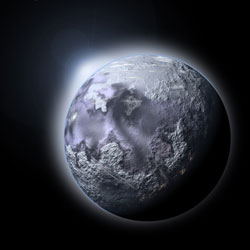Why is the early Earth not covered by ice?
In the early days of the Earth, the solar system did not exist as it does today. At that time, the sun was very young, so it emitted very weak light, not enough to warm the earth today. However, the surface of the Earth was not covered by ice.
According to geological records, the water present on the globe as early as 3.7 billion years ago (Earth was thought to be 4.5 billion years old). This means that the average temperature on the green planet must be above freezing. The scientific world is uncertain about the temperature at the time, but they agree that our planet is not covered by ice in most of its history.
 Previously, many people had the theory that the Earth was warmer now due to the presence of gases like CO2, methane, ethane or ammonia.
Previously, many people had the theory that the Earth was warmer now due to the presence of gases like CO2, methane, ethane or ammonia.
The new study, led by a team of experts at the Planet Research and Air and Space Tourism Center, has led scientists to reconsider the role of CO2 in warming the Earth in the first session.
This group of scientists has established a new model of the atmosphere of the young earth, which includes updated information about how radioactivity can be absorbed to heat.
This model is used to test interesting times about the history of the globe, such as the end of the Late Heavy Bombardment period.
The results show that CO 2 more than 3 billion years ago was only 10% of the previous forecast but still effective for the Earth when the sun was still weak. This helps the scientific community better understand the terrible impact of CO 2 on the Earth's climate and global ecosystem.
- The Earth used to be a
- Equatorial Earth has been covered by glaciers
- Discover super Earth covered with precious stones, shimmering in the universe
- Mars has been covered by water like Earth
- What happens if all the volcanoes on Earth erupt?
- The deeper you go into the Earth's core, the higher the temperature: Why is that?
- Super-planetary discovery
- The terrible flood cooled the earth
- Yellow halo like honey covered Earth in ISS image
- Purple planet is a place of life!
- Three ice ages
- ESA telescope launches early warning of falling meteors
 Is the magnetic North Pole shift dangerous to humanity?
Is the magnetic North Pole shift dangerous to humanity? Washington legalizes the recycling of human bodies into fertilizer
Washington legalizes the recycling of human bodies into fertilizer Lightning stone - the mysterious guest
Lightning stone - the mysterious guest Stunned by the mysterious sunset, strange appearance
Stunned by the mysterious sunset, strange appearance